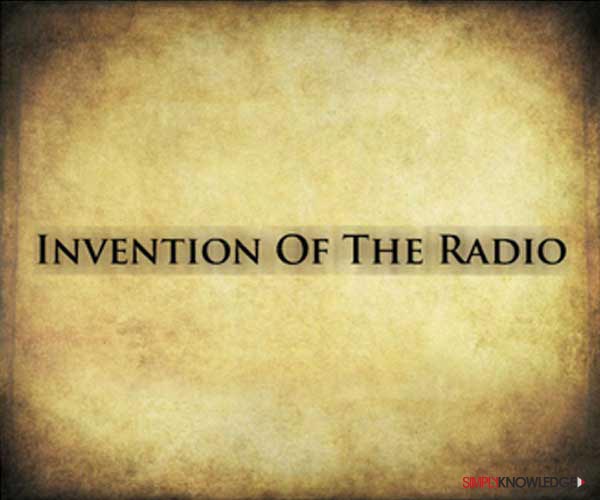Wireless Communication
Radio
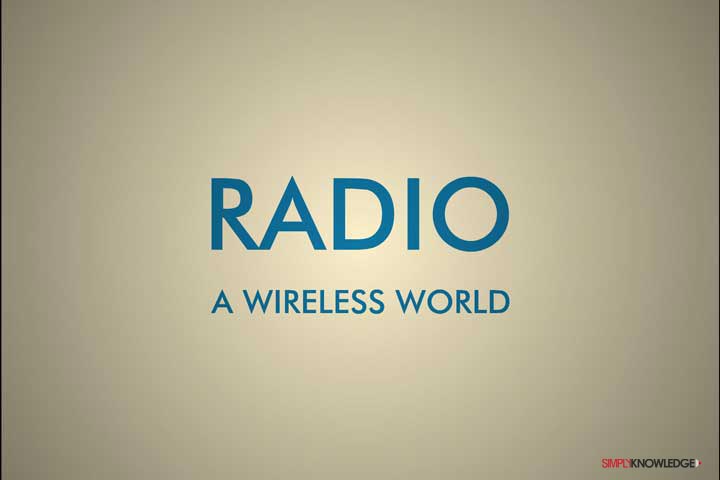
- You walk down the street and see a young boy wearing baggy jeans, an extra large t-shirt and messed up hair carrying a big boom box out of which the music is blaring.
- An elderly person is sitting on the corner bench of a park straining his ears with a transistor to listen to the news or maybe the commentary of a cricket match.
- The young generation has found a new alternative to listening and streaming for music via the Internet Radio.
- And not just entertaining, but Radio has been of significant help during times of catastrophe as well. With the help of Ham Radio (Amateur Radio), assistance and relief work could be undertaken more swiftly and efficiently.
- We’re learning about the invention that brought world change and is still a significant part of our lives.
- How safe would you feel to travel in an airplane that is missing its radio signalling device? Or a ship without its navigational devices? Wouldn’t you get bored sitting on the couch with a bag of potato chips and no television to watch? How do you think you would warm food in your microwave without electromagnetic waves? Yes, even microwaves work on the technology developed, while experimenting with Radio waves.
- Radio is not a mere means of entertainment or used as a form of advancing technology, but it nurtures our innate need for communicating.
- Today, our world revolves around communication. Man himself is a social being and communication is one of the most essential urges of human evolution. It is human necessity to communicate. We want to understand, be understood and make people understand.
- Radio like many other inventions had very humble roots. It sprung out from our imagination and the urge to communicate, but this modest invention had a long way to go when it came to communicating with the world.
- From being a couple of sparks to being an invention that could spark a revolution. From being humble to becoming propagandist. This is the story of the evolution and the invention of the radio.
- Necessity is the mother of all inventions and now as we have already established the necessity of radio technology in our world, lets travel back in history and learn about its conception from a couple of sparks to being the invention that could spark a revolution.
- It all began with man! All inventions begin with man and his needs, and this particular invention was invented to suffice his need to communicate.
- The first thing we learn and know about man is that he is a social animal and his basic need is communication.
- Communication is the medium through which man wants the world to recognize him and it is through communication that man wants his impression imprinted on the world.
- Even if we take reference from today, only the individual who can communicate his thoughts to the world either through speech, writings or even art is the one who conquers the world.
- It is human nature. We want to understand, be understood and make people understand. We want the world to know us.
.jpg)
- Communication is of utmost importance and can be divided into two categories; Visual and Verbal. Visual communication can be further divided into written or pictorial communication.
- Man began communicating in this manner approximately 40,000 years ago and the evidence of these still remains in the form of primitive cave paintings.
- However, in the context of our reading, the more important form of communication is verbal communication.
- It has a history much older than that of written communication and the significance of verbal communication can be concluded by the fact that, the roots of it were said to be sown approximately 100,000 years ago, that is 60,000 years before written communication.
- Man learns from his surroundings, so the first and most rudimentary form of verbal communication was said to be formed imitating the sounds and cries of animals and birds.
- Over time, these simple sounds evolved to form words and then turned into stories. Stories then turned into folklore and individuals would pass down their oral history, information and traditions over generations in this manner.
.jpg)
- As time passed and population grew, man’s needs increased to the extent that it led to land acquisition and domination. This led to the need of communicating over distances and addressing a large crowd.
- He needed a method that would be seen from afar and be heard over great expanses.
- To overcome this want, he began using fire and sound signals. The use of drums and smoke signals began. He began to use conch shells, drums created out of animal skin and bone. He also learnt that he needed to concentrate sound in a certain direction to effectively communicate his message.
- Man then invented the ‘Bullhorns’, an instrument that amplified and channelled sound. These instruments were an alternative to shouting, but these methods came with obstacles.
- Sound and fire messages could be misinterpreted and the surroundings like wind, rain and other natural elements could affect its audibility.
- But could this stop man from moving ahead? He had to find a way for sound to travel the distance.
- Signals were a method of communicating, but were proving to be a method not worthy enough. He realized, the best method to communicate would be sending his own voice. This would completely eliminate the chances of misinterpretation.
- So man began his quest to find a method of communicating over great distances in his own voice.
- Man was now exploring beyond what his eyes could see and therefore the urge to dominate also began to grow with time. In came the era of kings and queens. Wars and battles were being fought. This was the era during which another method of communication began to arise.
- Warfare demanded sending and receiving messages and updates in time, proving to be an advantageous position over one’s rival. Therefore, to receive messages quickly a messenger system was put into effect.
- These messengers would carry verbal messages from one point to another, but it would take days, weeks and sometimes months for the message to reach its destination. On the other hand, many verbal messages would also be lost due to miscommunication.
- As an alternative to overcome the mishaps of verbal miscommunication, messages were then sent written on scrolls.
- To save on time and energy another medium that was used during the 12th century was domesticated pigeons, but the obstacle to this form of communication was the unpredictability of the bird, weather and much more.
- Despite the minor advancements in the field of communication, problems yet persisted and therefore, man began to rely on himself rather look for answers and solutions elsewhere.
.jpg)
- As time progressed, so did Man! The 15th century saw the advent of the printing press and the written word was beginning to spread its wings; however conversing and verbal communication were still stagnating. Not many advances were occurring.
- Man was still attempting to make his voice heard as far as possible. The 17th century saw the transformation of the bullhorn which evolved into a conical shape instrument that would amplify sound and increase its reach.
- In the century that followed, ‘Town hailers’ or ‘Town criers’ were being heard on the streets. Town hailers were employed as announcers and they would walk around the streets, shouting announcements, news and warnings. To attract the attention of the people, Town hailers would dress in elaborate clothes and carry a bell. They would generally start with the words, “Oyez, Oyez, Oyez” which would translate to ‘hear ye’.
- It was during the 18th century itself that science was also beginning to make advances and get a grasp on the world. Scientists and inventors around the globe were working towards finding methods and instruments that would send and receive messages wirelessly and irrespective of the distance.
- Man began to search for his answers in science. His imagination was growing wings and he was about to take his first flight, but before that came many experiments and trials. Life was taking a more scientific turn in terms of the method of communication.
.jpg)
The 500 year old, time honoured tradition of Town Hailing has now transformed into fun competitions all over the world. Guinness World Records are created in context of this tradition and an individual holds the record for having the loudest cry at 112.8 decibels.
- In the late 1700’s, wireless communication could be considered as a figment of imagination. Even the thought of transmitting news, music or any form of audio via air waves for that matter was a farfetched idea.
- But man has been known for doing the impossible and making his dreams a reality. So, many inquisitive minds around the world began to simultaneously carry out experiments to achieve the dream of wireless communication.
- Tracing where the origins of wireless communications lie is like searching for a needle in a haystack.
- This is such an arduous task because the invention of such a substantial magnitude cannot be attributed to one individual.
- The invention of any object is not only affected by scientists and researchers but also has to face the constraints of time, year and environment. The same was the case with wireless communication as well.
- However, before wireless communication, wireless telegraphy came into being and scientific advances were made in optical communication and communication via wires. Though these were very different from the final product, it still laid the significant and strong foundation for wireless communication.
- Man desired to communicate more effectively and effortlessly and the feeling of domination from the era of kings and queens had now transformed into the era of science and research.
- The advances were many but the earliest and most notable of them is Claude Chappe’s contribution in the field of communication.
- Chappe performed an experiment in 1794, wherein he created a structure with two hinged arms on a hilltop, mimicking the actions of a man holding signal flags in his hands. The arms would move to form different messages and an individual on the other end of the tower would then read the message and decode the same with the help of a telescope.
- This could be called the first successful experiment in wireless communication. But the invention faced many hindrances as it was dependent on sight and visibility.
- In comparison to previous communication systems, Chappe intended to name the invention after its great speed, calling it the ‘tachygraphe’, meaning ‘fast writer’ in Greek.
- But in a funny turn of events, it was not Chappe who christened his invention. His friend suggested that the invention be called ‘the far writer’, and Chappe considered his suggestion. Well, ‘far writer’ in Greek translates to “Telegraph”.
- With the non-electrical telegraph system in place, scientists now began working on the electrical telegraph. In the year 1809, German physicist, anatomist and inventor, Samuel Soemmering made an advancement with the invention of a crude telegraph through which a message could be transmitted to approximately 2000 feet.
- He invented it by connecting 35 wires with gold electrodes under water and the message was decoded by reading the amount of gas that was released during the experiment.
- This telegraph system was then further altered by American inventor, Harrison Dyarin 1828, when he invented a system through which electrical sparks would burn dots and dashes on paper.
- The most effective and refined version of the telegraph was invented by Samuel Morse in the year 1837 for which he then went on to gather acclaim. Morse, along with Alfred Vail created the first practical telegraph and did so with the use of electromagnets which imprinted dashes and dots on paper tape.
- The telegraph was also crowned as the Victorian Internet and it was worthy of the title as it changed how the world viewed communication. People began to communicate over distances.
- Better communication led to more organized transmission of messages, due to which, wars were fought differently and more efficiently.
- The Telegraph also greatly affected and assisted in the game of falling in love. An example of telegraph love letters is below.
- However, the telegraph had its restrictions and constrains. It could send or receive only one message at a time.
.jpg)
.jpg)
- No wonder the telegraph was a giant leap in communication, but man wanted communication to be more. The world still needed to be heard, so the search for a worthy instrument carried on and experiments in the field of electricity and magnetism were undertaken.
- Inventions in the field of electricity, magnetism and electromagnetism, etc were major contributing factors in the field of wireless communication.
- Scientists like Michael Faraday (1791-1867) discovered electromagnetic induction in 1831 which paved the path for wireless communication.
- His theory of electromagnetism, also known as Faraday’s law of Induction stated that the interaction between magnetic field and electric circuit is required to generate an electromagnetic field (EMF).
- To hypothesize that a changing magnetic field is necessary to induce a current in a nearby circuit, Faraday wrapped a small paper cylinder with wire to form a coil. He connected the coil to a galvanometer (an instrument that is used to identify and calculate small electric currents), and then moved a magnet back and forth inside the cylinder.
- With every movement of the magnet, the needle in the galvanometer also moved. This was an indication that a current was created in the coil. The experiment also showed that when the magnet was not moved, the needle would move back to zero. Thus, Faraday concluded that a moving magnetic field is required for electromagnetic induction to occur.
- Faraday’s law is the basic principle of electromagnetism that is prominently used in transformers, inductors, and many other electrical motors and generators.
- Though not remotely connected at this point in time, this was one of the foremost and important inventions and theories to occur and help the invention of wireless communication.
- This discovery laid the foundation for many scientists to keep researching and finding new methods of sending and receiving messages and sound wirelessly.
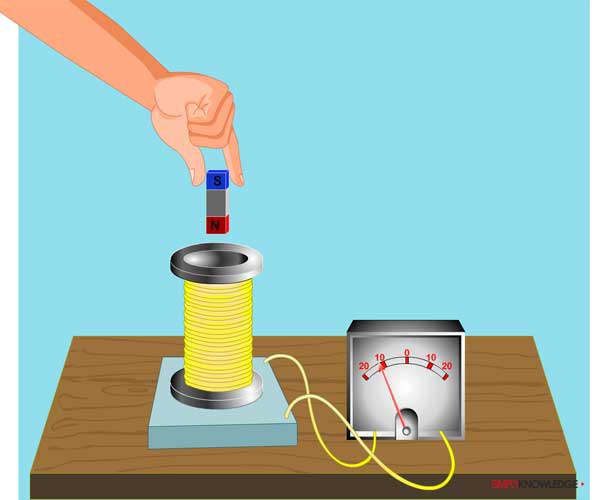
- Following Faraday’s footsteps, James Clerk Maxwell then discovered electromagnetic waves.
- Scottish mathematician, Maxwell was still studying at the Cambridge Philosophical Society when Faraday’s works in relation to electromagnetic induction were read out.
- The recital created an intrigue in Maxwell’s mind and so he began working on his interpretation of Faraday’s work. He published his works, “On Faraday’s Lines of Force” in 1855 and later went on to discover and foresee electromagnetic waves.
- Maxwell’s theory proved that electricity, magnetic fields and other light products were the result of the same phenomenon i.e. electromagnetic field.
- Maxwell demonstrated a subtle connection between the two types of force, unexpectedly involving the velocity of light.
- To Faraday’s principle, Maxwell argued that it required mathematical data to back it. Hence, to support Faraday’s research, he began his mathematical research.
- Maxwell also proved that electrical waves and magnetic waves can be coupled together to form electromagnetic waves. He also determined that a change in magnetic field would induce a change in electrical field and vice versa.
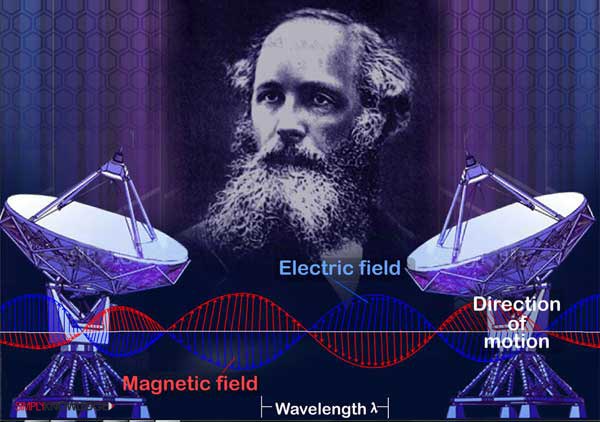
Maxwell made this discovery in the 1860’s and went on to contribute extensively to science. He could be said to be of utmost importance and in a survey conducted to find the 100 most prominent physicists of all time, Maxwell was voted the third greatest physicist, behind only Newton and Einstein.
In later years, Einstein was so influenced by these early inventors that he kept a picture of Michael Faraday and James Clerk Maxwell on his study wall alongside Isaac Newton.
- Meanwhile with the invention of the telegraph, advances were being made towards other significant devices to assist communication with sound.
- The first requirement when one needs to speak and be heard is the instrument that can grasp sound. The ear trumpets and bullhorn which advanced over the years and transformed into the megaphone were the only innovations when it came to sound transmission, so the search for a new acoustical device had started. Scientists had begun working on an invention that would facilitate conversing over distances.
- Around this time, English scientist and inventor, Sir Charles Wheatstone coined the term “microphone”.
- The microphone was being designed to be incorporated in the telephone and it was eventually invented in 1876 by Emile Berliner (German born, American inventor).
- The telephone was invented by Alexander Graham Bell while he was making attempts and improving on the telegraph. The telephone by simple definition is to transmit speech electrically, due to which messages could now be heard over distances without much effort.
- The first words spoken via the telephone were, “Mr. Watson- Come Here- I want to see you” on March 10, 1876.
- The telephone would be incomplete without the microphone and therefore this invention revolutionized the world of communication.
- The telephone along with the telegraph was a giant leap in wireless communication and with the entry and wide usage of the microphone, communication showed unprecedented potential.
- The very next year the ‘loudspeaker’ was patented by German inventor, Ernest Siemens on December 14, 1877 and this amplified the reach of sound. With the invention of the electrical microphone and the loudspeaker, people began to understand the worth of a convincing speech. Many monarchies and political leaders used this power of sound to let their views reach great distances.
- The people had never seen or heard their kings and leaders. Microphones allowed the people to get to know their leaders better, whereas the leaders began to use this medium to spread their propaganda agenda.
- Now man could be heard, but his communication was still restricted to wires. Wireless communication was a couple of steps away and he was forging ahead to fulfil his dream.
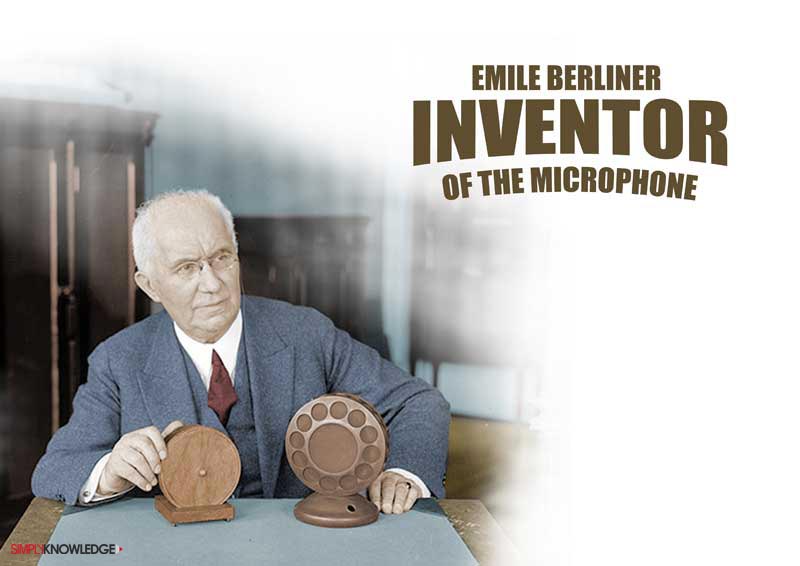
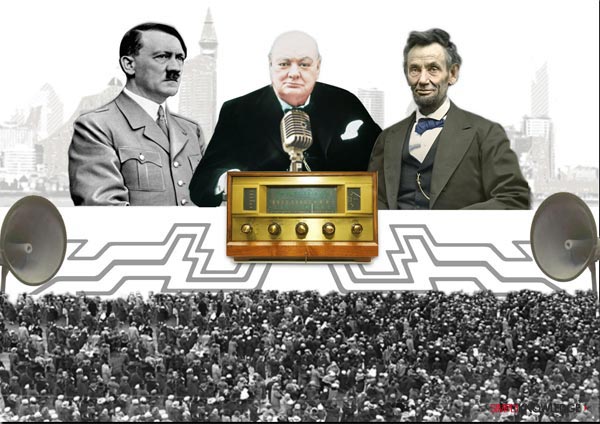
- The advances in the 18th and 19th century came from the inquisitive minds that wanted to discover, invent and understand. One such individual was David Edward Hughes.
- On a particular day in 1879, David noticed that sparks could be heard in a telephone receiver while he was experimenting with his carbon microphone (a device that consisted of two metal plates that are separated by granules of carbon and converts sound to electrical signals). This observation triggered his curiosity.
- It led him to conduct further experiments. He developed a device called the spark gap transmitter. This device generated radio frequency electromagnetic waves using a spark gap which consists of an arrangement of two conducting electrodes separated by a gap usually filled with a gas such as air, designed to allow an electric spark to pass between the conductors. This led to the discovery of electromagnetic waves.
- It was due to the loose connections in the Induction Balance built by Hughes that he discovered that they were subject to sudden electrical impulses. These impulses would provide some form of energy and the creation of a certain sound in the receiver a little distance away. This was a breakthrough in the process of the invention of wireless communication.
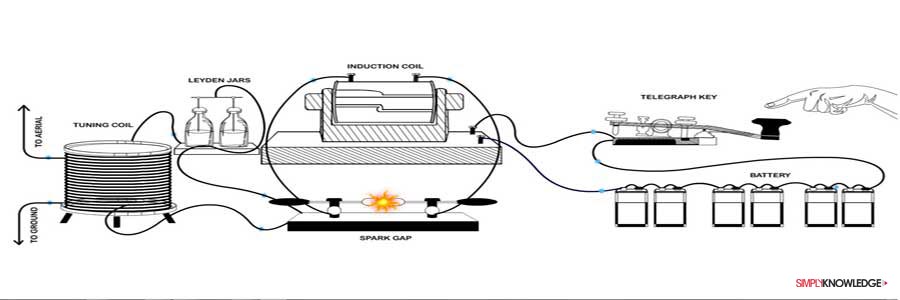
- Former advances and inventions had laid a foundation for wireless communication. To strengthen it, an American travelling dentist made one of the most important innovations in the field of wireless communication.
- It was during the late 1850’s, Mahlon Loomis got interested in electrical charges and performed many experiments to prove his theories.
- By the October of 1886, he claimed to have transmitted signals using kites as antennas. He performed this experiment between the two Blue Ridge Mountains, Virginia which was located 14-18 miles apart and his audience was a group of congressmen.
- For the experiment, he built two separate stations on the peak of the mountains. Upon the peak of one mountain, he set up a kite, the string of which was a copper wire and the bottom of it was covered with copper gauze (a woven metal mesh). This apparatus was then connected to a galvanometer, the circuit of which was connected to the ground. As soon as the connection was established the galvanometer showed a passage of current.
- On the second peak, a similar apparatus was set up. The wire of the second kite would be connected to the ground. At regular intervals, the wire attached to the galvanometer was grounded.
- The needle of the galvanometer would deflect every the circuit was completed and a signal would be recorded by the apparatus on the other peak.
- With this experiment, Loomis proved that signals (messages) could be transmitted over a certain distance.
- Wireless communication was not a dream anymore, but it was yet many years away from becoming reality.
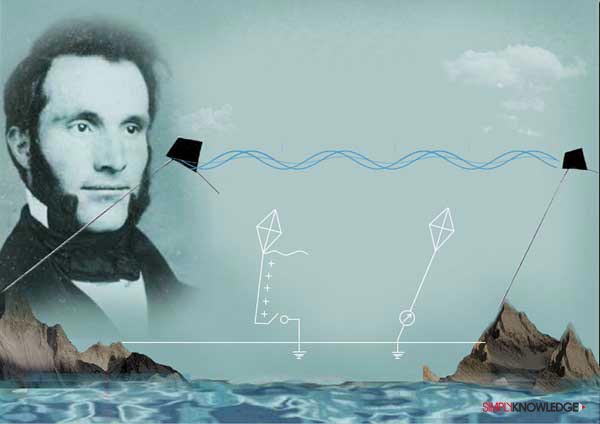
- In the year 1886, Heinrich Hertz, a German physicist conclusively discovered and proved the existence of electromagnetic waves and expanded and clarified the electromagnetic theory of light.
- Through many experiments, Heinrich Hertz proved that electromagnetic waves could travel over some distance. James Clerk Maxwell and Michael Faraday had previously only predicted this theory that electrical fields can couple with magnetic fields to form electromagnetic waves, but Heinrich Hertz conclusively proved this experiment.
- To prove his theory, he used two rods as receivers and a Hertz antenna’s receiver. Whenever, the antennas picked up a wave, the spark would jump. With this experiment, Hertz showed that the signals he received possessed the qualities of electromagnetic waves.
- Hertz’s invention and discovery conclusively triggered the process and beginning of the invention of the Radio, Television and Wireless Telegraphy. To honour his contribution, the unit of frequency was then named, “Hertz” (the S1 unit of frequency that is defined by the number of cycles per second as a periodic phenomenon).
- Heinrich Hertz’s discovery was also the basis for Marconi to carry on with an experiment of wireless communication.
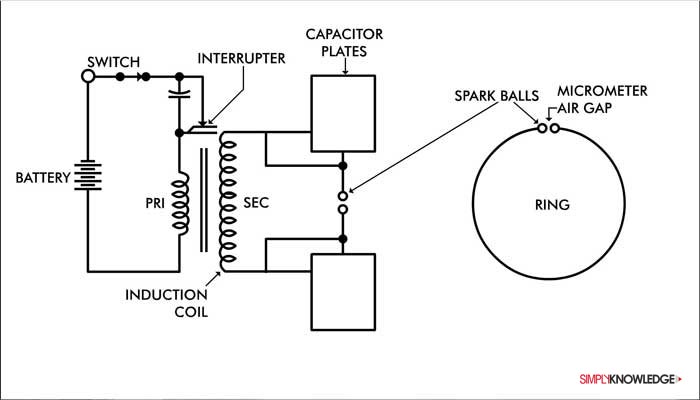
- In the 1890’s, the Italian inventor, Marconi became interested in the electrical charges and radio waves. He began to perform experiments on the hertzian waves or radio waves (the theory of Heinrich Hertz according to which a hertzian wave is produced by the oscillation of electricity in a conductor).
- In the December of 1895, while Marconi was experimenting in the attic, he successfully transmitted radio waves. However, the waves only transmitted until a very short distance. This success was enough reason to keep carrying out the experiments to transmit over a farther distance.
- During one experiment, he began to notice sparks between circuits just a couple of metres away. He kept making additions and alterations to the equations and extended the distance to over 2 kilometres.
- By the March of 1897, Marconi conducted a series of demonstrations for the British government and had transmitted Morse code signals across the Salisbury plains and the distance covered was about 6 kilometres.
- On 13th May 1897, Marconi achieved another landmark in the world of radio when he sent the first ever wireless communication over water. The signals travelled across the Bristol Channel from Lavernock Point to Flat Holm Island in Wales. The message read in Morse code "Are you ready" and the distance covered was 14 kilometres.
- Marconi’s invention and contribution to the field of electromagnetic waves was of utmost importance. He overcame the distance factor and also the obstacle of communicating without wires which was a hindrance in communication for a very long time. He was therefore crowned the father of radio.
- The name was also undergoing great changes over the years. People formerly called it, “wireless telegraphy”. With time, it was shortened to be known only as “wireless”.
- Then, one of the biggest developments occurred. The term ‘Radio’ was coined by French physicist, Edouard Branly in 1897 which was derived from the word ‘radiate’ which is in turn derived from the Latin word “radius”.
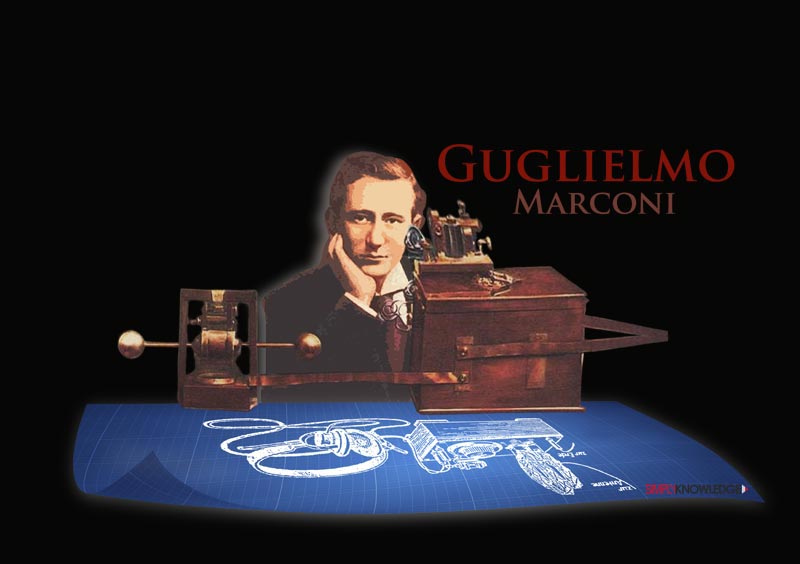
- It was the dawn of the 20th century and radio was growing to become a world phenomena.
- An American inventor was moving towards making a remarkable discovery in the field of wireless communication. In the year 1900, a weak transmission of voice was made by Reginald Fessenden over the radio waves. This could be called the very beginning of voice and audio being transmitted through radio waves.
- Fessenden could also be called the pioneer, who perpetuated the use of voice and music over the radio.
- In the year 1901, Marconi claimed to have transmitted a radio signal overseas. He had four masts erected in Poldhu, Cornwall, England and also had a temporary receiving station in New Foundland, Massachusetts, USA.
- The attempts of sending and receiving messages across the ocean began in December 1901 and were done daily for 3 hours. The station at Poldhu would send the alphabet “S” in Morse code.
- On December 12th, 1901, the first successful attempt of a radio message was made to be sent across the Atlantic Ocean. Marconi did not receive any speech or pictures, rather he just received a signal using Morse code.
- Nevertheless, it was an achievement. A wireless signal was transmitted over the distance of the Atlantic Ocean.
- He proclaimed that he heard signals at 12.30pm, 1.10am and 2.20am. He applied for a patent for the same and received it in 1904. He was now crowned the inventor of the radio.
- Radio was now slowly overcoming its obstacles of distance and transmitting sound.
- Canadian inventor, Reginald Fessenden came into the picture again. He had already made a weak transmission of sound over radio waves. This time around he became the first person to broadcast words and music over the radio waves.
- On 24th December, 1906, Fessenden made the first radio audio broadcast. He played on his violin, ‘O Holy Night’ and also read a verse from the Bible. Radio had found its voice on the eve of Christmas.
- He was radio’s first voice and could be very well called the first person to broadcast words and sound over the radio.
- With the growing advances, the power of the radio was being recognised the world over.
- On the other hand, for his contributions to the world and his inventions in the field of wireless communications, Marconi, along with Karl Ferdinand Braun was awarded the Nobel Prize in Physics in 1909.
- During this time itself an American broadcaster names Charles David Herrold came into the picture. In the year 1909, Herrold built the world’s second broadcasting station.
- He named the station “San Jose Calling” and used the spark gap technology to transmit human voice and music. It was during this time itself that radio broadcasting has its origins. He also coined the terms broadcasting (transmitting a message to the public) and narrowcasting (also means transmitting a message but to a selected audience/region).
- To spread the reach of radio and improve its efficiency, Herrold designed Omni directional antennas to assist the radio signals spread in all directions. He claimed to be the first broadcaster to accept advertising and also shared publicity with a record store.
- During his shows, Herrold would play records, which would then instantly become a hit and the records would be a sell out.
- His wife, Sybil could be said to be one of the first woman in experimental radio and could also be called one of the first woman to be heard on the air. She was in other terms, the first female RJ (Radio Jockey).
- Herrold on the other hand, could be called the inventor of radio broadcasting.
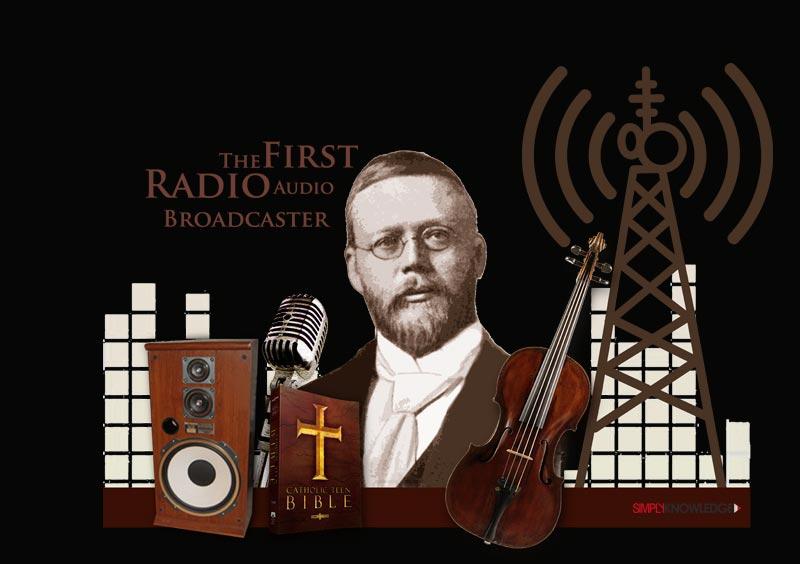
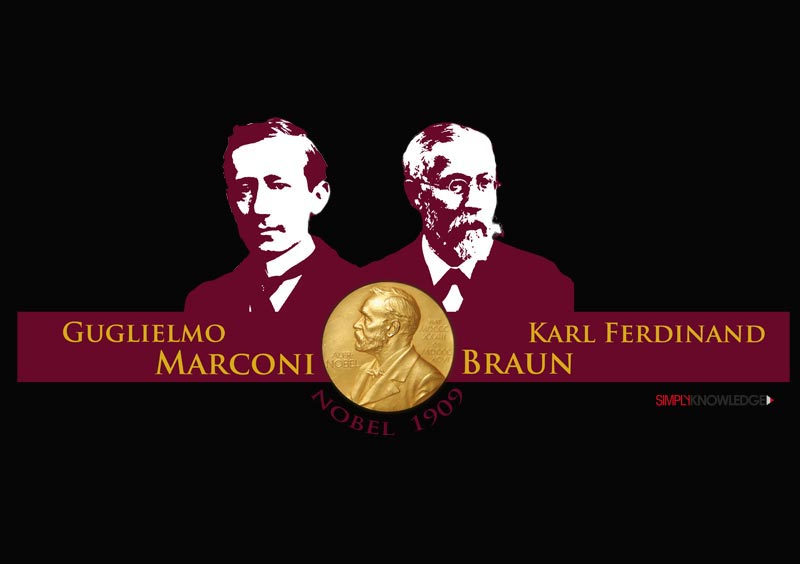
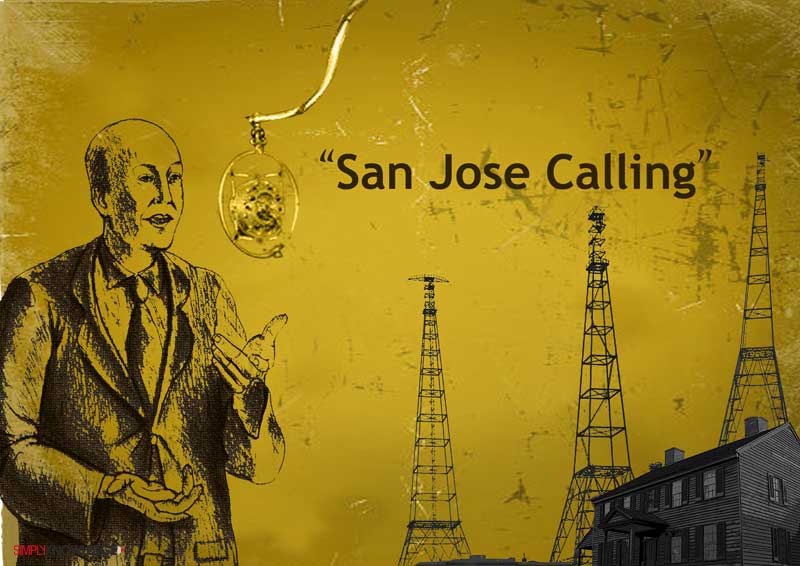
- Simultaneously, people and governments began to understand the effectiveness and importance of radio.
- In the year 1910, the wireless ship act was passed by the United States of America government. According to this act, it was mandatory for all ships with a passenger capacity of over 50 and travelling more than 200 miles away from the coast to be equipped with wireless radio equipment.
- This act was passed two years before the RMS Titanic sank. The Titanic was equipped with the wireless radio. After the Titanic collided with the iceberg and began to sink, it contacted many ships in the vicinity.
- The radio signal was received by the RMS Carpathia due to which lives of nearly 700 passengers could be saved, as the ship had come to its rescue.
- After the Titanic disaster, the Radio Act of 1912 was passed. According to this federal law, all sea faring vessels were required to maintain 24 hour radio vigil, simultaneously keeping in touch with nearby radio stations and ships.
- Radio had crossed the barriers of distance and had now transformed into a safety measure, which would help change the world and save lives.
- While the radio had become mandatory in sea transport, it also made appearances in aircrafts by 1917. It allowed better navigation and increased communication between the aircraft and ground service officials.
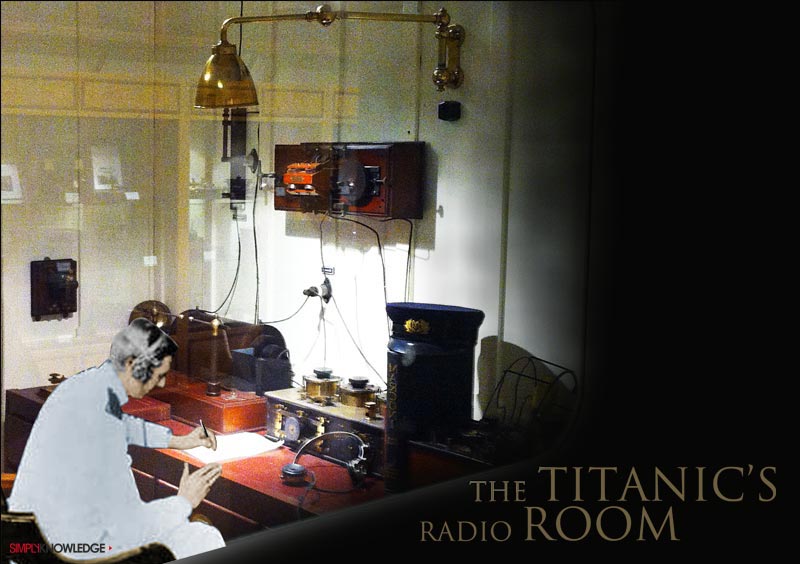
- On the other hand, the craze for radio was increasing with time. After the initial broadcast, everybody wanted a piece of the invention. A major contributor to the increase in the number was due to KDKA.
- KDKA was a radio station located in Pittsburgh, Pennsylvania, USA. The station was owned by the Westinghouse Electrical Corporation and was created on 2nd November, 1920. KDKA was also the first commercial radio station.
- By the mid 20’s, the development of the Amplitude modulation (AM) technique was attributed to Reginald Fessenden and Lee de Forest.
- In the years that followed radio was all about AM. Then came in Edwin Howard Armstrong. He could be called one of the most influential inventors in the long history of the radio. In the 1930’s, he introduced frequency modulation which improved the quality and usage exponentially.
- Modulation can be defined in one word and that is change. For majority of the years until now it was dominated by AM (amplitude modulation) which provided a fair voice audio over the radio and is the simplest form of broadcast.
- AM waves can be transmitted over greater distances but there is a lot of interferences and noise, especially in the case of lighting or thunderstorms.
- AM waves also have a limited 200 Hz to 56 kHz. This in turn, restricts AM to be useful only as talk radio and not feasible for music.
- Edwin Armstrong came up with an alternative to this shortcoming. He came up with FM (frequency modulation) which minimalized static and interference from electrical equipment.
- FM radio operates at a much higher frequency in comparison to AM radio, a range of 87.5MHz to 108.0MHz. This allows the frequency to transmit on a much smaller scale of within 100 miles. Transmissions with FM are more suitable for music, stereo and other forms of audio.
- With the advent of FM, radio became even more attractive and enticing. The world couldn’t resist the glorious sound that travelled through the air.
- The many who have dedicated songs to their loved ones via the radio owe a big thanks to frequency modulation.
- FM completed ‘The Radio’ and provided the world a medium of communication through which man could not only send messages, but could send it in his own voice.
- However, the list of advantages of radio technology did not stop there.
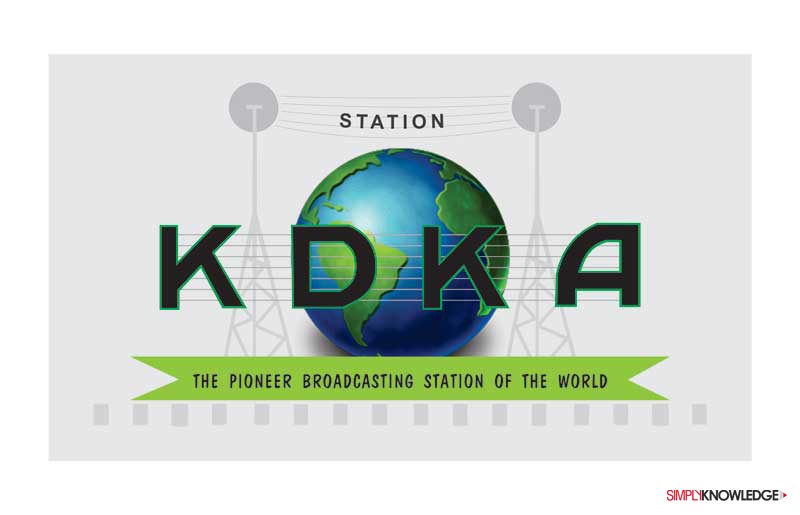
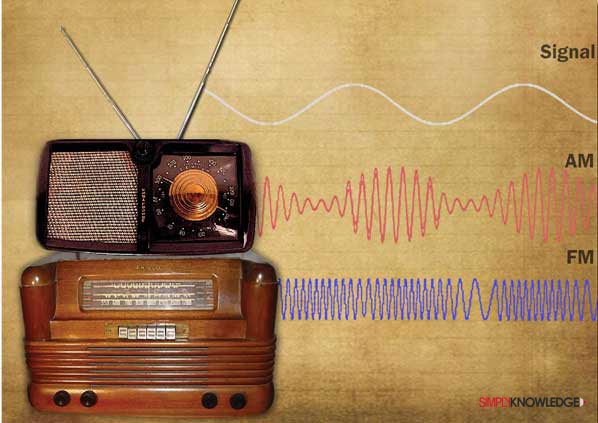
- Over the years, radio transformed and so did its uses. From being a mere means of communication, it turned into entertainment and then a necessity.
- Radio grew trendier and even more useful. Living up to the phrase, it did make the world a smaller place.
- And not only did it make the world a smaller place, it helped explore the outer space. It was due to radio technology that man could know the secrets of the world other than his own. The landing of Sputnik 1 on the Moon would be an impossible dream without the help of Radio.
- Sputnik 1 was the first artificial satellite that was released in space by the Soviet Union on 4th October, 1957. This launch led to the race of space exploration. Sputnik 1 was soon followed by the launch of Explorer 1 by the United States of America in 1958 and Astérix by France in 1965. India also entered the space race when it launched its satellite, Rohini on 18th July, 1980.
- Today, the applications of radio have increased invariably and also its usage has become something very remarkable. Radio technology is applied in most modern day appliances like television, radar, heating equipments and mobile phones.
- From communicating to commuting, radio plays a significant role in travel as well. It has made travelling much more safe and convenient.
- Our mobile phones which we flaunt so ceremoniously employs radio technology on many levels. Not only does radio technology help us communicate with each other, but the Bluetooth facility provided also employs very short wave length radio frequencies.
- Radio technology has played a significant role in Global Positioning Systems (GPS). It has even ventured into the field of weaponry with the electromagnetic weapon (a supersonic weapon designed to deliver heat, mechanical or electrical energy causing certain effects.) The High Energy Radio Frequency weapons or HERF weapons use radio waves to disrupt electronic services.
- Radio on the other hand has become a world phenomenon with everyone wanting a piece of it.
- With the passing years and the war erupting, radio also played a very important role in development and the outcome of the wars that occurred. It transformed how the world communicates with each other.
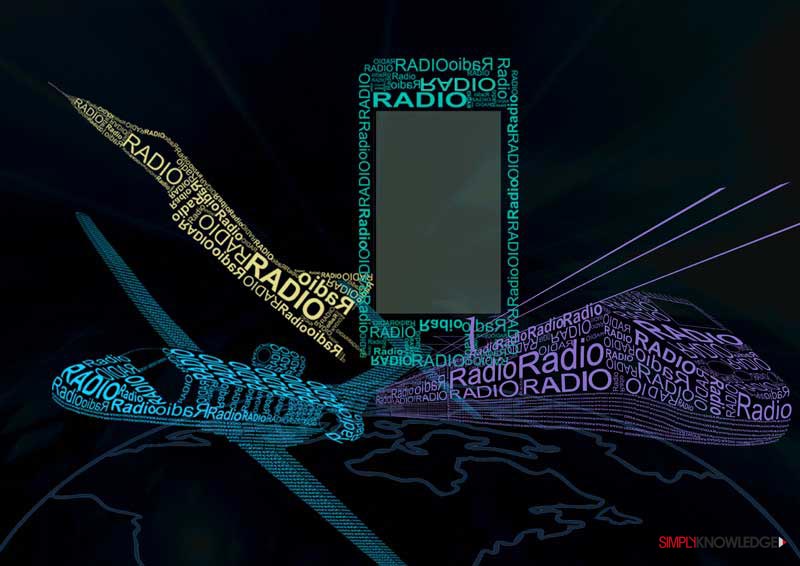
- To end our reading and portray the emphasis of Radio, many great and influential individuals recognized the importance of radio and said:
- Radio is the theatre of the mind, television is the theatre of the mindless.- Steve Allen
- I can turn the radio on right now and get inspired- Courtney Love
If the words of these individuals didn’t impress you, try living a day without the objects that work due to radio technology and you will begin to garner a respect for it automatically.
